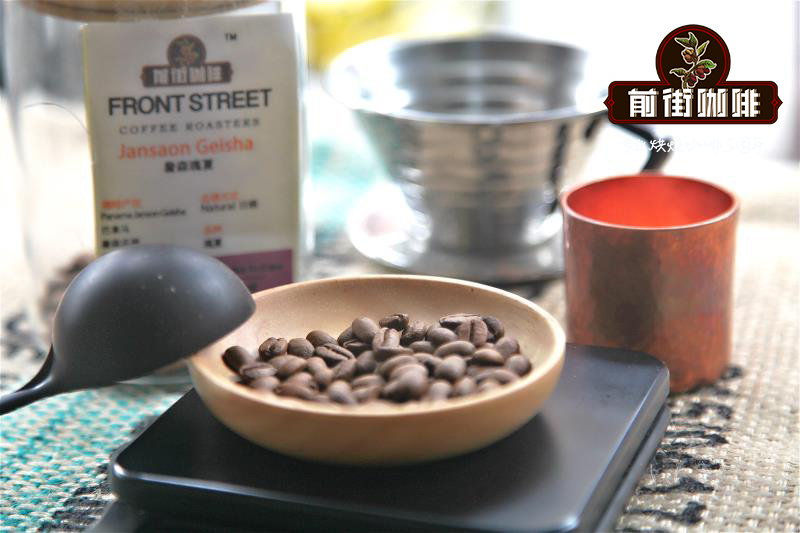How do Arabica coffee beans taste? is Arabica coffee black?

Professional coffee knowledge exchange more coffee bean information please follow the coffee workshop (Wechat official account cafe_style)
Coffee has a long history, and it was not until the third wave of coffee that people had the enthusiasm to explore every step in the production process of a cup of coffee: how farmers grow it, how workers harvest it, how to deal with coffee, and how bean bakers find the most suitable roasting method for this coffee bean.
All the beauty begins with the seed.
Coffee originated from a seed, from a white flower and jasmine-like tree, the fruit of the tree will become cherry-like shape, and the center of the fruit is coffee beans.
Botanical Kew Garden in London is responsible for identifying more than 120 different types of coffee, many of them from Madagascar, Asia and Australia. Among these varieties, small fruit coffee (Arabica) and medium fruit coffee (Robusta) are the two main varieties, which are consumed by many people every day, and although there are many other varieties of coffee, so far they have not been proved to be available for mass production.
What is Arabica?
Arabica coffee accounts for about 80% of the world's coffee production. It is native to Ethiopia, usually grows at an altitude of 1000-2300 meters above sea level, and is distributed in the "coffee belt" between the tropics and subtropics. The region provides nutrient-rich (usually volcanic) soil, regular rainfall and plenty of sunshine, which are necessary for coffee to grow well.
Arabica needs special care because its coffee trees are vulnerable to diseases and insect pests, such as coffee leaf rust or fungal infections, which cause orange patches on the leaves and affect photosynthesis, causing the leaves to fall and kill the trees, which, if not handled properly, could destroy the entire plantation. Arabica coffee is also vulnerable to pests such as coffee berry beetle (Berry Borer), which lay eggs in coffee cherries and eat flesh after hatching, greatly reducing the quality of coffee.
Despite these obstacles, Arabica coffee tastes smooth and becomes the first choice for consumers compared to Robusta. A cup of Arabica coffee is full of aroma and delicacy, sometimes described as floral, fruity, citrus, clay, cream, chocolate, caramel, honey or sugar. The flavor can also range from sweet to full-bodied, depending on the origin and handling of the coffee.
As for the origin of American coffee, there is a saying that during World War II, American soldiers were not used to espresso in Italy, so Italian baristas added hot water to espresso. Unexpectedly, the coffee made in this way was very popular with American soldiers, and the method of heating hot water for espresso was called "Americano" by the Italians. With the spread of espresso around the world, American coffee has spread!
When we order coffee in a coffee shop, we will see "American coffee" marked on menu. If you order this coffee, you will get a cup of espresso made by an Italian coffee machine with hot water and black coffee without sugar and milk.
Important Notice :
前街咖啡 FrontStreet Coffee has moved to new addredd:
FrontStreet Coffee Address: 315,Donghua East Road,GuangZhou
Tel:020 38364473
- Prev

How to make Arabica coffee? is Arabica coffee good coffee?
Professional coffee knowledge exchange more coffee bean information Please pay attention to the coffee workshop (Wechat official account cafe_style) Arabica flavor and aroma of good quality, is often used to make boutique coffee, while robusta is easy to grow, has the advantage of low price, mainly used to match beans or as the main raw material of instant coffee. Generally speaking, Arabica is mainly used in individual or high-quality products.
- Next

How does Arabica coffee taste? Is Arabica coffee black?
Professional coffee knowledge exchange More coffee bean information Please pay attention to coffee workshop (Weixin Official Accounts cafe_style) Coffee has a long history of development. It is not until the third wave of coffee craze that we have the enthusiasm to explore every step of the production process of a cup of coffee: including how farmers plant, how workers harvest, how to process coffee, and how to make beans for this coffee.
Related
- Beginners will see the "Coffee pull flower" guide!
- What is the difference between ice blog purified milk and ordinary milk coffee?
- Why is the Philippines the largest producer of crops in Liberia?
- For coffee extraction, should the fine powder be retained?
- How does extracted espresso fill pressed powder? How much strength does it take to press the powder?
- How to make jasmine cold extract coffee? Is the jasmine + latte good?
- Will this little toy really make the coffee taste better? How does Lily Drip affect coffee extraction?
- Will the action of slapping the filter cup also affect coffee extraction?
- What's the difference between powder-to-water ratio and powder-to-liquid ratio?
- What is the Ethiopian local species? What does it have to do with Heirloom native species?

